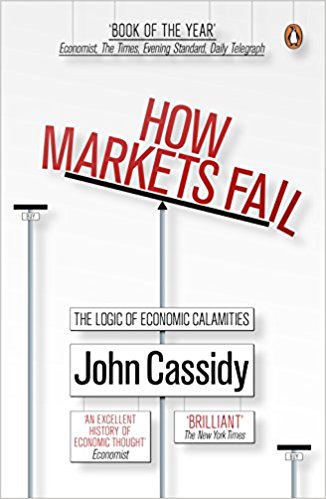How Markets Fail Summary

3 min read ⌚
 The Logic of Economic Calamities
The Logic of Economic Calamities
When individual’s interests sabotage the ones of the group, we are in for a long, and unprosperous ride.
To prevent such occurrences, we leave you with “How Markets Fail Summary.”
About John Cassidy
 John Cassidy is renowned British-American journalist and an author.
John Cassidy is renowned British-American journalist and an author.
“How Markets Fail Summary”
The instability of today’s economy and the financial sector challenges the basic theory of establishing a free market and thus stimulate a market equilibrium. Recent years have given us much to think about, and prior to the 2008 financial crisis, the economists didn’t foresee any hidden danger that may suffocate our progress.
These events shaped the economic system and showed why even open markets could not serve as a guarantee for stability. John Cassidy unlike other experts, questions this system and investigates the events leading to the financial crisis.
In addition, Lehman and many other financial organizations realized the mistake when it was too late. Purchasing an excessive amount of securities bundled produced devastating results and not even subprime mortgages changed the big picture.
Creditworthy institutions and individuals could no longer afford such interest rates because of the plunge in the economy, further provoked by the mortgage mess. The lending between banks was put on hold, which generated lower bond yields.
MMF in cooperation with government officials took drastic measures to improve the credit availability and prompt new investments. Despite the governmental interventions, more time for recovery was needed. Such recapitalizing would form a new financial structure with a single purpose – to prevent this periodical crisis to be remodeled into a full-scale economic collapse.
The US economy experienced a massive blow, and evoking stabilization by adjusting the macroeconomic policies was critical.
The unpredictable economic oscillations – supported by old-fashioned principles troubled the growth. In theory, the market itself would have to find that perfect supply-demand ratio, without direct interference by neither the buyers nor the sellers.
However, these free markets didn’t receive all the support they craved for. Hopefully, especially for the macroeconomy, government interference is critical for handling external threats.
In the late 20th century, the US government started losing its grip on the banking system, thereby allowing more freedom in all operations. Regarding the economy, free markets have always been subjected to a lot of doubts, because of all the corruption and monopoly.
Key Lessons from “How Markets Fail”
1. Adam Smith – The creator of free markets
2. The uncertainty of stocks
3. New times require new measures
Adam Smith – The creator of free markets
He advocated for limiting the banks’ freedom of “movement” and focus more on prompting market equilibrium.
His ideas are well-received by educated economists, mostly because of his theory, in which he explains the power of the “invisible hand.”
The uncertainty of stocks
Empirical analysis indicates that stock prices are guided by the momentum, tending to move in various directions depending on the external and internal circumstances.
These short-term oscillations lead to financial stagnation.
New times require new measures
Without making significant reforms, the financial sector will always be prone to crisis and uncontrollable inflation.
The economy will suffer unless we create a new system that supports free markets.
Like this summary? We’d Like to invite you to download our free 12 min app, for more amazing summaries and audiobooks.
“How Markets Fail” Quotes
A common reaction to extreme events is to say they could not have been predicted. Share on X Wall Street and Main Street, for all their mutual suspicion, are locked in a symbiotic embrace. Share on X During a speculative bubble, the laws of supply and demand don’t get repealed, but they do get suspended. Share on X One of the key assumptions of the free market model is that everybody has all the information they need to make the right decisions. Share on X In the best 19thcentury tradition, the housing bubble and the subprime craze would be allowed to run their course. Share on X







